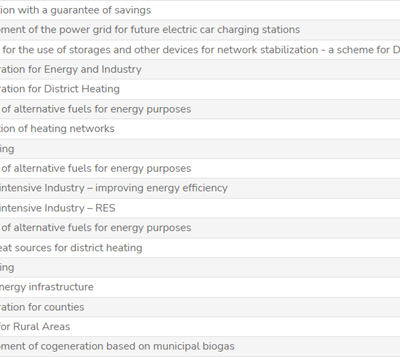CBAM – another step on the journey to Fit for 55 fulfillment
CBAM, or the Carbon Border Adjustment Mechanism, is another European Union regulation embedded in the Fit for 55 policy, bringing the EU closer to carbon neutrality. Fit for 55 is supposed to lead us to reduce our emissions by 55% by 2030, compared to levels from 1990.
EU ETS – a system to motivate emission reductions
EU ETS is a system for allocating greenhouse gas emission allowances. At the beginning of each year, member states receive an allocation of emissions, which they can distribute among individual emitters, such as power plants or factories. All emissions that exceed those included in the EU ETS are subject to additional fees. This mechanism is intended to accelerate the Union’s energy mix transformation and mobilize the largest emitters to reduce greenhouse gas emissions.
Year by year, the amount of emission allowances allocated free of charge is decreasing, motivating member countries to modernize, for example, their energy or heating infrastructure. If emissions do not decrease, the government will be obliged to pay more for those greenhouse gases that exceed the free allocation.
What is the EU ETS money used for?
To a large extent, fees for unavoidable emissions are collected in the Modernization Fund. The beneficiaries of this fund are currently the 8 EU member states whose energy mix requires the most investment to move towards a more sustainable model. Poland is getting a considerable share among the countries benefiting from this fund. Some sources claim that by charging a fee for greenhouse gas emissions, the EU is enriching itself on countries that get most of their energy from coal, for example. In fact, these countries benefit from the system because they get enormous subsidies for grid modernization. The following list shows some of the upgrades made in Poland with Modernization Fund money from the EU.
Source: https://modernisationfund.eu/investments/
The general concept of CBAM
What does EU ETS have to do with CBAM? CBAM will be directly linked to the EU ETS. Under CBAM, importers of products covered by the regulation must declare the sum of emissions related to importing goods. The price of certificates for these emissions will be set based on weekly allowances from the EU ETS. Similarly to ETS, CBAM will also be centrally administered by the European Union. Moreover, both systems cover importing the same products: cement, iron and steel, aluminum, fertilizers, electricity, and hydrogen. This is due, among other reasons, to the fact that their production involves the highest emissions.
When will CBAM enter into effect?
The initial phase of introducing the CBAM system will begin as early as October 1, 2023. Initially, the companies will only be required to report their emissions. In its complete form, the regulation will come into force in 2026. Lawmakers also considered reducing administrative work and introduced a minimum threshold for the value of imported goods or services. CBAM will only cover shipments with a value of more than €150, thus reducing the sum of taxed shipments by about 30%. Importantly: if a non-EU manufacturer has already taken care to neutralize emissions through carbon offsets or in any other way, the CBAM tax will not be imposed on the carbon-neutral product. This mechanism further incentivizes non-EU manufacturers to comply with intra-EU regulations.
Will CBAM prevent greenhouse gas carbon leakage?
Greenhouse gas carbon leakage occurs when companies operating in specific sectors or subsectors relocate production to other countries where emissions restrictions are less stringent. The source of such practices can be, for example, different levels of ambition in climate policy and the desire to save funds. Imports of such products contribute to an increase in the global carbon balance, as imported products with a high carbon footprint replace EU products with a lower carbon footprint. In sum, this leads to a weakening of the effectiveness of EU policies aimed at reducing emissions. Therefore, the European Union has taken measures to mobilize manufacturers abroad to reduce their emissions and meet the challenges posed by global climate change. In 2015, the EU was responsible for about 18% of global CO2 emissions while setting some of the most ambitious reduction targets. If other countries do not adjust their plans, even the most restrictive regulations will not protect the world from the worst effects of climate change. This is why CBAM and other mechanisms have been introduced to increase the competitiveness of products inside the EU and impose requirements on manufacturers from other countries to align with EU policy.






